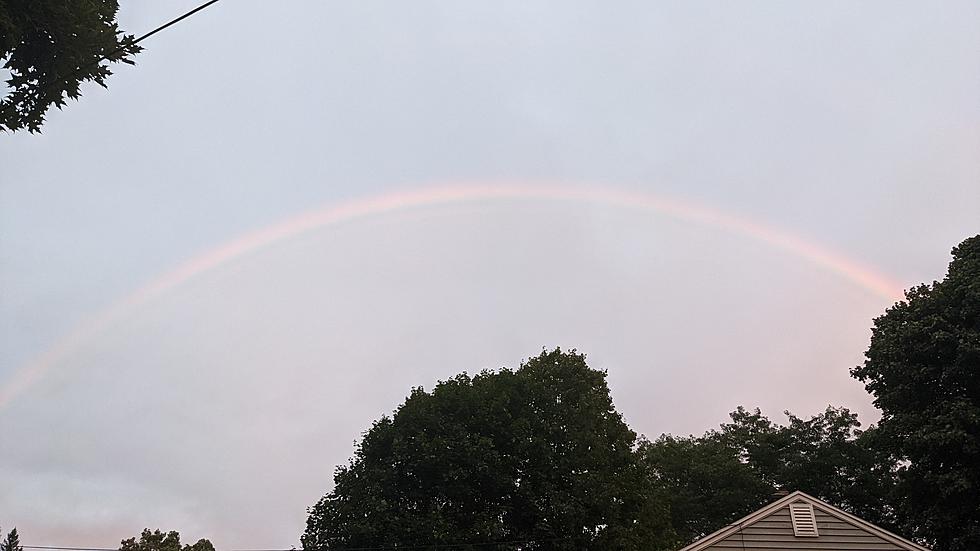
A Rainbow Over Berkshire County Makes for a Thursday Afternoon Smile
There's something about a rainbow, isn't there? You can't help but smile when you look up after a midday rain and see a rainbow's beautiful colors brightening up the sky. After seeing one over the Berkshires on Thursday afternoon got me thinking about these natural wonders - not only from a beauty perspective but from a scientific perspective.
First of all, the basics of a rainbow:
According to Wikipedia, a rainbow is a meteorological phenomenon that is caused by reflection, refraction, and dispersion of light in water droplets resulting in a spectrum of light appearing in the sky. Jeesh, that's a little heavy worded and kind of confusing. To put it into terms that everyone can easily understand, a rainbow (according to littlehandsforlittlebins.com) is formed when light passes through water droplets in the atmosphere, and the water droplets break white sunlight into the seven colors of the visible spectrum. I figured a kid's website would put it into simplified terms, and I was right. That makes more sense.
Did you know that there are actually 12 different types of rainbows? It's true. Here are just a few of them, according to Wikipedia:
Double Rainbow:
A secondary rainbow, at a greater angle than the primary rainbow, is often visible. The term double rainbow is used when both the primary and secondary rainbows are visible. In theory, all rainbows are double rainbows, but since the secondary bow is always fainter than the primary, it may be too weak to spot in practice.

Twinned Rainbow:
Unlike a double rainbow that consists of two separate and concentric rainbow arcs, the very rare twinned rainbow appears as two rainbow arcs that split from a single base. The colors in the second bow, rather than reversing as in a secondary rainbow, appear in the same order as the primary rainbow.
Full-circle Rainbow:
In theory, every rainbow is a circle, but from the ground, usually, only its upper half can be seen. Since the rainbow's center is diametrically opposed to the Sun's position in the sky, more of the circle comes into view as the sun approaches the horizon, meaning that the largest section of the circle normally seen is about 50% during sunset or sunrise.
The very coolest fact that I discovered in doing a little research on rainbows is that no two people see a rainbow the same way. You can read all about that and more at popsci.com, HERE.
See the Must-Drive Roads in Every State
KEEP READING: Here are the best places to retire in America
LOOK: Famous Historic Homes in Every State
More From WUPE









